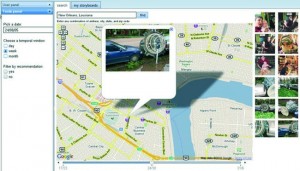The idea that a monkey in the US could control a robot’s movements in Japan is stunning. Even more stunning is the fact that the research is four years old. It was discussed publicly in a Jan. 15, 2008 article by Sharon Gaudin for Computer World,
Scientists in the U.S. and Japan have successfully used a monkey’s brain activity to control a humanoid robot — over the Internet.
This research may only be a few years away from helping paralyzed people walk again by enabling them to use their thoughts to control exoskeletons attached to their bodies, according to Miguel Nicolelis, a professor of neurobiology at Duke University and lead researcher on the project.
“This is an attempt to restore mobility to people,” said Nicolelis. “We had the animal trained to walk on a treadmill. As it walked, we recorded its brain activity that generated its locomotion pattern. As the animal was walking and slowing down and changing his pattern, his brain activity was driving a robot in Japan in real time.”
This video clip features an animated monkey simulating control of a real robot in Japan (the Computational Brain Project of the Japan Science and Technology Agency (JST) in Kyoto partnered with Duke University for this project),
I wonder if the Duke researchers or communications staff thought that the sight of real rhesus monkeys on treadmills might be too disturbing. While we’re on the topic of simulation, I wonder where the robot in the clip actually resides. Quibbles about the video clip aside, I have no doubt that the research took place.
There’s a more recent (Oct. 5, 2011) article, about the work being done in Nicolelis’ laboratory at Duke University, by Ed Yong for Discover Magazine (mentioned previously described in my Oct. 6, 2011 posting),
This is where we are now: at Duke University, a monkey controls a virtual arm using only its thoughts. Miguel Nicolelis had fitted the animal with a headset of electrodes that translates its brain activity into movements. It can grab virtual objects without using its arms. It can also feel the objects without its hands, because the headset stimulates its brain to create the sense of different textures. Monkey think, monkey do, monkey feel – all without moving a muscle.
And this is where Nicolelis wants to be in three years: a young quadriplegic Brazilian man strolls confidently into a massive stadium. He controls his four prosthetic limbs with his thoughts, and they in turn send tactile information straight to his brain. The technology melds so fluidly with his mind that he confidently runs up and delivers the opening kick of the 2014 World Cup.This sounds like a far-fetched dream, but Nicolelis – a big soccer fan – is talking to the Brazilian government to make it a reality.
According to Yong, Nicolelis has created an international consortium to support the Walk Again Project. From the project home page,
The Walk Again Project, an international consortium of leading research centers around the world represents a new paradigm for scientific collaboration among the world’s academic institutions, bringing together a global network of scientific and technological experts, distributed among all the continents, to achieve a key humanitarian goal.
The project’s central goal is to develop and implement the first BMI [brain-machine interface] capable of restoring full mobility to patients suffering from a severe degree of paralysis. This lofty goal will be achieved by building a neuroprosthetic device that uses a BMI as its core, allowing the patients to capture and use their own voluntary brain activity to control the movements of a full-body prosthetic device. This “wearable robot,” also known as an “exoskeleton,” will be designed to sustain and carry the patient’s body according to his or her mental will.
In addition to proposing to develop new technologies that aim at improving the quality of life of millions of people worldwide, the Walk Again Project also innovates by creating a complete new paradigm for global scientific collaboration among leading academic institutions worldwide. According to this model, a worldwide network of leading scientific and technological experts, distributed among all the continents, come together to participate in a major, non-profit effort to make a fellow human being walk again, based on their collective expertise. These world renowned scholars will contribute key intellectual assets as well as provide a base for continued fundraising capitalization of the project, setting clear goals to establish fundamental advances toward restoring full mobility for patients in need.
It’s the exoskeleton described on the Walk Again Project home page that Nicolelis is hoping will enable a young Brazilian quadriplegic to deliver the opening kick for the 2014 World Cup (soccer/football) in Brazil.
